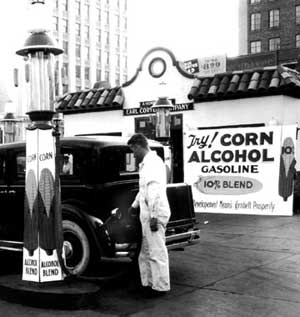The Oil Drum did a great analysis of the economics of ethanol derived from corn as the feedstock yesterday. Read the article, it’s very well done. I’ll steal the punch line, on average at present ethanol prices (production and sale) there is a 7% margin on the product. That’s right, 7%. It’s awfully tough to make a living on 7% unless you’re moving massive volumes.

Does this mean ethanol is dead? No, not at all for a few reasons. First, the prices for ethanol sale move as do the corn feedstock prices. At $5/bushel of corn, that means the feedstock price for ethanol is $1.30/gallon (net of the $0.55/gal recovery from the resale of distillation byproducts.) In a certain sense, corn ethanol’s challenges today are a direct result of its early success – the more demand there is for the feedstock, the higher the price goes, corn has doubled in price the past couple of years.
Second, even with the current tough economics, the money spent in the production and consumption of ethanol is staying in the US vs. being shipped to OPEC countries, this is a net positive and it seems likely that government regulations will favor domestic ethanol production in upcoming energy policy decisions.
Finally, technology associated with alternate feedstocks, (i.e., cellulosic ethanol) is advancing at a pretty fast clip. When the science is able to be applied at scale against a feedstock like switchgrass where there is no competing food demand, the feedstock price should go down dramatically and perform more predictably (although there will be a premium paid in higher capital costs to build these plants it appears.)
It’s clear given the situation in Brazil that ethanol economics can work at scale, but the right approach must be employed. The biofuel market may be in a trough, but it’s likely a temporary situation.








